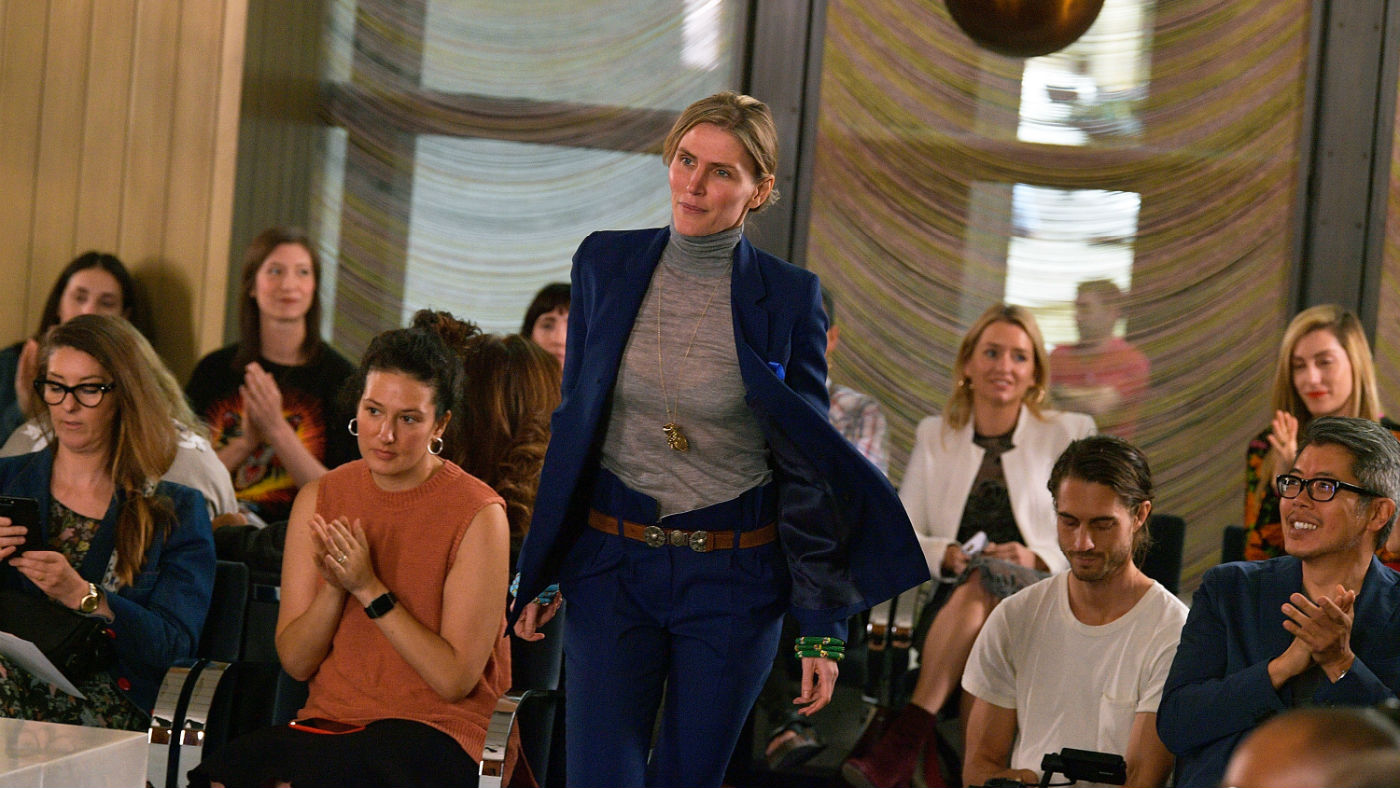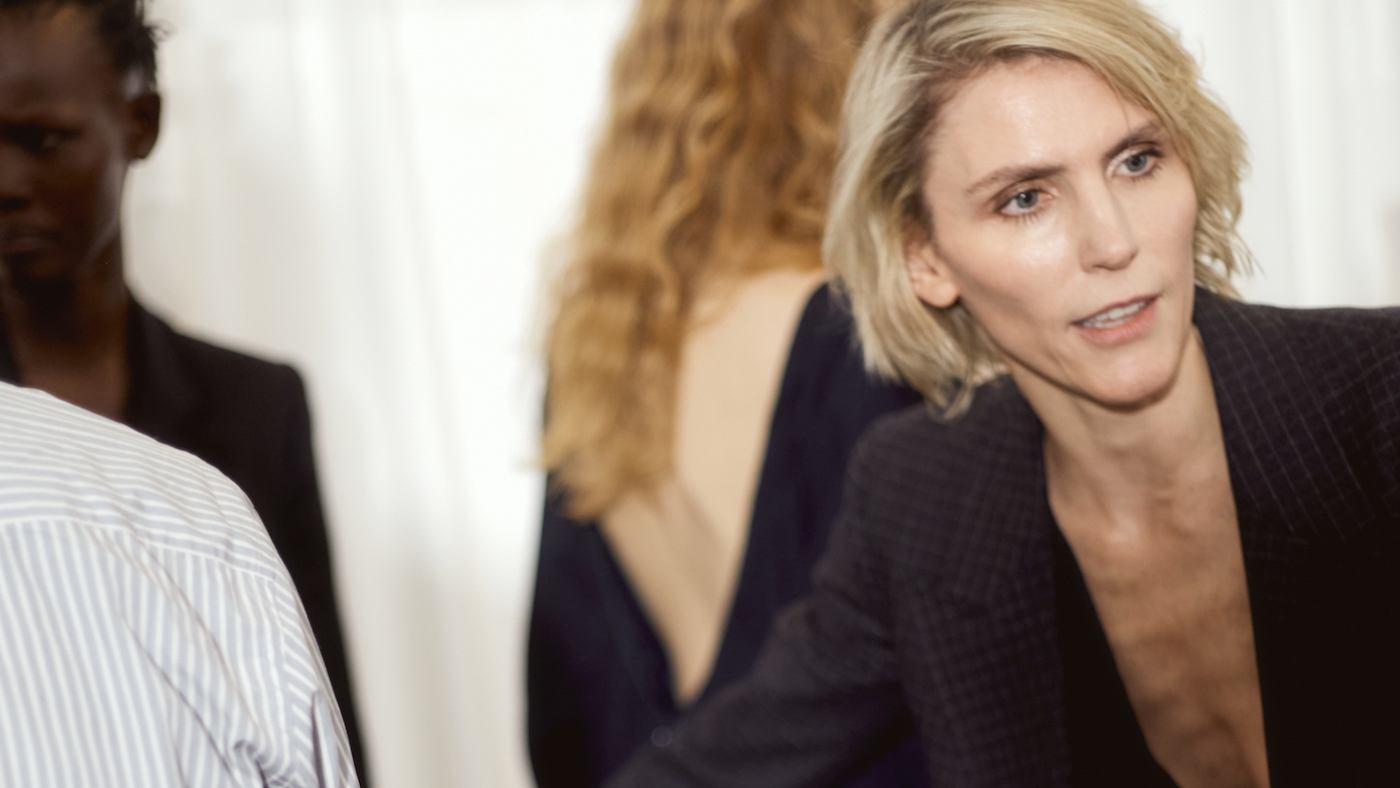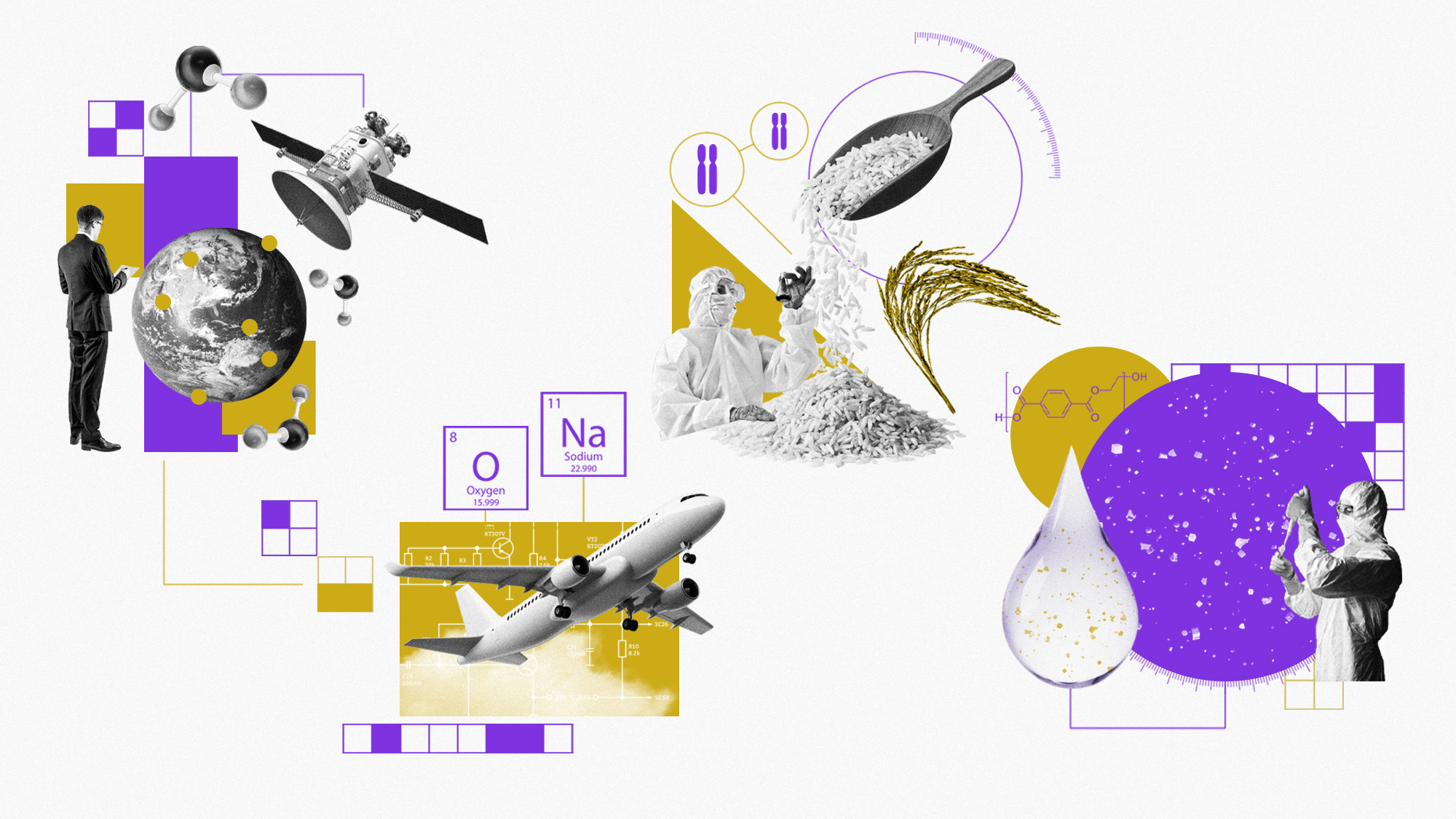Gabriela Hearst sets the agenda
Luxury comes with a conscience at the acclaimed designer’s Manhattan-based brand

What do Joni Mitchell, Diana Ross, Joan Baez and Maria Callas have in common? Well, along with award-winning careers, the four chart-topping performers have all been namechecked with Gabriela Hearst handbags.
Hearst set up her business in late 2015, and the following year unveiled her first accessory: the Nina bag, named after Nina Simone. The iconic design is a round-edged folded Napa leather pouch with a metal turn-lock closure, and its structured top handle is measured to look good both when dangling from lower arms and when hand-held. A thing of sculptural beauty, the malleable Nina bag quickly topped many wish lists.
“We had this insane demand, retailers around the world wanted it,” says Hearst. But instead of upping manufacturing and the number of merchants carrying the Nina, Hearst decided to adopt a limited and direct retail strategy. In doing so, she blueprinted her business ethos as valuing quality over quantity.
The Week
Escape your echo chamber. Get the facts behind the news, plus analysis from multiple perspectives.

Sign up for The Week's Free Newsletters
From our morning news briefing to a weekly Good News Newsletter, get the best of The Week delivered directly to your inbox.
From our morning news briefing to a weekly Good News Newsletter, get the best of The Week delivered directly to your inbox.
“We have two main values: long-term view and sustainability,” the designer explains. “We want to do this for a long time, and we believe in growing at a healthy pace.”
Hearst’s focus on longevity and conscious consumption has its roots in her upbringing: the Uruguayan-American designer was raised at Santa Isabel, her family’s ancestral ranch in Uruguay’s north-western Paysandú region. The 17,000 acres of farmland is home to horses, cattle and sheep; a long car journey is required to reach the closest town. “We just didn’t buy stuff,” says Hearst, recalling home-made soap.
The few items of clothing she did purchase were made to measure by the family’s seamstress, each item carefully chosen and finished with practicality in mind. “I think that my love for things that are well made and for quality that comes from a utilitarian aspect [stems from here],” she says. “I think we are moving into that culture again, understanding that new is not always better. Having less but of a higher quality.”
After attending The British Schools of Montevideo, Hearst enrolled at the capital city’s Universidad ORT Uruguay, where she studied communications. At the turn of the millennium, following a short sojourn to Paris, Hearst crossed the Atlantic. In Manhattan, New York, she joined the Neighborhood Playhouse School of Theatre – alma mater to Jeff Goldblum, Out of Africa director Sydney Pollack and singer-songwriter June Carter Cash – to train in the performing arts.
A free daily email with the biggest news stories of the day – and the best features from TheWeek.com
And in 2004, she set up her first fashion business, before launching her current eponymous concern five years ago.
In 2013, Hearst – née Perezutti – married John Augustine Chilton Hearst, grandson of publishing magnate and politician William Randolph Hearst. Today, the couple and their three children split their time between their homes by the Hudson river in Upstate New York and Manhattan’s West Village.

Hearst works from the city’s Chelsea area, where she shares premises with her small team. “I feel very blessed, it feels like a microcosm,” she says of the set-up. Describing the impact that the global coronavirus pandemic has had on her hometown, she adds: “It’s really sad to see a lot of the business that you know shut down.”
In addition to discussing her design and business philosophies, my phone chat with Hearst is a quick-fire lesson in current societal and environmental concerns: fresh from reading this April’s National Geographic – released to commemorate the 50th anniversary of Earth Day – Hearst is making plans to highlight the magazine’s special issue to her Instagram followers. She said: “If you have a platform, you might as well use it.”
Within the fashion industry, Hearst has pioneered a number of sustainability efforts since her debut Autumn/Winter 2015 collection, breaking ground with the production of her designs and the materials she uses. “It can feel a bit shallow to just make things,” she says. At Gabriela Hearst, both a considered use of natural resources and traceability are brand pillars.
The designer’s AW17 runway collection was fashioned from 30% deadstock fabrics; and she has since worked with aloe-treated linens and a soft-to-the-touch twill fabric woven from merino wool gathered at her family’s Uruguay ranch.
This autumn, Hearst used a new pure cashmere corduroy; there are riding coats – the designer is a skilled horsewoman – made from repurposed fabrics and leather footwear finessed with hand-painted impressionistic motifs. Elsewhere, she collected and reworked remnants of antique Turkish kilim rugs.
A long-standing partnership with social enterprise Manos del Uruguay - which supports women in rural Uruguay using time-honoured techniques - has given shape to richly textured hand-knit creations, working with recycled cashmere. It’s the company’s goal to not use any virgin fabric by 2022. “When I started doing this, it was not OK to use the word deadstock or re-purposed, to associate that with luxury,” she says. “I was like, ‘That’s what luxury is. It’s about something that is limited, that there is not a lot of and that is well made.’ The challenge is: how can you make the highest quality product with the lowest impact on the environment.”
Then there are the young brand’s boutiques. Hearst opened her New York City flagship in the winter of 2018, taking over premises neighbouring Manhattan’s The Carlyle Hotel, once home to John F. Kennedy. The designer opened the doors to her first London boutique in August 2019: located on Mayfair’s Brook Street, the site features interiors mapped out by Norman Foster’s award-winning practice.
Hearst says “Norman Foster was one of the pioneer environmental architects, he knows his stuff.” At Brook Street, a parquet floor is assembled in a herringbone pattern, made from reclaimed oak wood sourced from a 2018 demolished Copthorne Barracks officers’ mess hall in Shrewsbury. Hearst’s designs are displayed via recycled cardboard hangers, and rooms are fitted with occupancy sensors, to optimise the use of electric energy. “It’s about choosing an alternative,” she declares.
Hearst’s success is also down to her timing. She tells me that a recent visit to the Prado museum in Madrid inspired the launch of Gabriela Hearst fine jewellery. It was while admiring Christ presented to the People – a 16th century masterpiece by Flemish Quentin Matsys – that Hearst homed in on the painting’s depiction of jewellery, which includes many-linked chain necklaces and stone-set rings, the designs of which are impressive yet pure of line. “I just love jewellery, I have always wanted to make jewellery – but, it’s always a matter of me knowing when I’m ready to do something that feels true to me,” she says, describing her selection of signet-type gold rings topped with rose quartz, lapis lazuli and pale marbled howlite.
Another recent addition to Hearst’s offering is menswear, for which she partners with New York-based graphic designer Peter Miles, a previous collaborator with Proenza Schouler’s Jack McCollough and Lazaro Hernandez, Parisian label Celine and German photographer Juergen Teller. The twosome specialise in timeless tailoring and easy-to-wear separates.
This autumn, a single-breasted coat is cut from recycled double face cashmere; felted cashmere is used to make loosely structured single- and double-breasted blazers. “There’s a grandpapa kind of luxury and then there is very fashion and street,” says Hearst, when describing her take on contemporary menswear.
And her designs, like her work in general, is “not about a logo, it’s about the quality”.
-
 The most anticipated movies of 2026
The most anticipated movies of 2026The Week Recommends If the trailers are anything to go by, film buffs are in for a treat
-
 The biggest viral moments of 2025
The biggest viral moments of 2025In the Spotlight From the Coldplay concert kiss cam to a celebrity space mission, these are some of the craziest, and most unexpected, things to happen this year
-
 Environment breakthroughs of 2025
Environment breakthroughs of 2025In Depth Progress was made this year on carbon dioxide tracking, food waste upcycling, sodium batteries, microplastic monitoring and green concrete